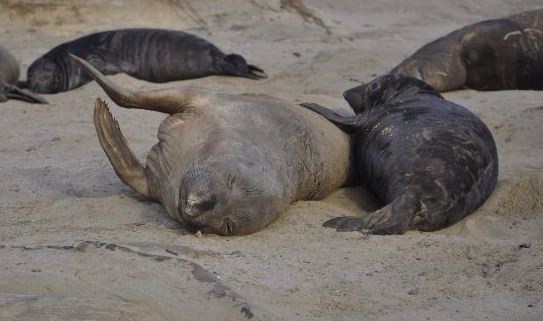Some seals know which way the wind blows when it comes to finding foraging grounds.
A new study shows that certain harbor seals are drawn to offshore wind farms in waters off the U.K. and German coasts — a phenomenon that could have long-term implications for ocean ecosystems.
The research was carried out by Dr Deborah Russell; a post-doctoral research fellow at the Scottish Oceans Institute at St Andrews.
Dr Russell and her fellow researchers gathered data from GPS devices attached to Harbour and Grey seals in the North Sea.
The seals’ movements around the British and Dutch coasts were tracked, looking in particular at their movements around wind farms and underwater pipelines, and the results were surprising to Dr Russell.
She said, “I was shocked when I first saw the stunning grid pattern of a seal track around Sheringham Shoal” – an offshore wind farm in Norfolk.
“You could see that the seal appeared to travel in straight lines between turbines, as if he was checking them out for potential prey and then stopping to forage at certain ones.
“Although marine mammals have previously been observed in the vicinity of offshore man-made structures such as wind farms, as far as we know this is the first time it has been demonstrated that some individuals have an affinity with the structures themselves.
“From the data we can infer that these individuals are foraging at the structures, likely as a result of a reef effect.
“The behaviour observed could have implications for both offshore wind farm developments and the decommissioning of oil and gas infrastructure.”
Dr Russell added that although the study and its findings are notable, they do not rule out the possibility of adverse impacts of the development or presence of man-made structures on marine wildlife.
“The study showed that operational wind farms can provide foraging opportunities for some individuals.
“However, the study only considered the effect on marine mammals during the operational stage of wind farms”, she explained.
“It is during the construction phase that wind farms are predicted to have the most dramatic negative effect on marine mammals.
“However, future development of such structures “could be designed to maximise any potential ecological benefits to marine wildlife”.
Agencies/Canadajournal
 Canada Journal – News of the World Articles and videos to bring you the biggest Canadian news stories from across the country every day
Canada Journal – News of the World Articles and videos to bring you the biggest Canadian news stories from across the country every day



